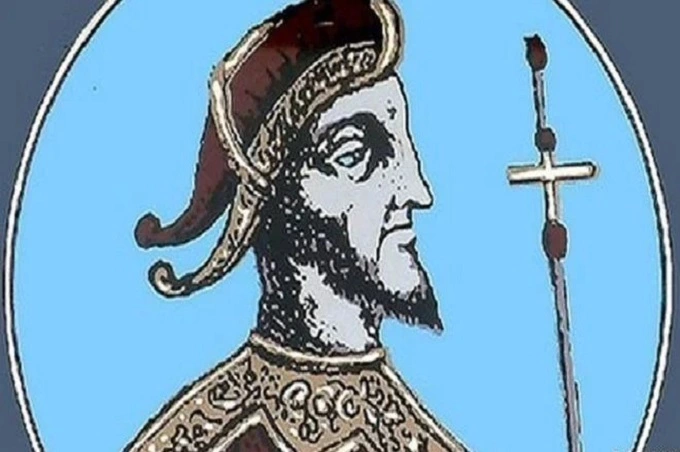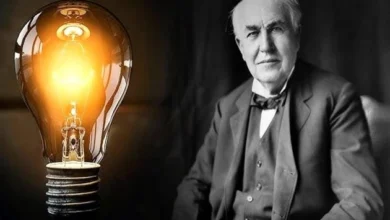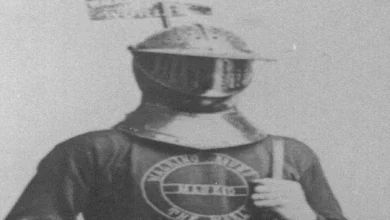Sweyn Forkbeard – the King of Denmark, who managed to seize the English throne

Sweyn Forkbeard, who lived from 960 to 1014, left a less significant mark on history, unlike his son Cnut the Great, the conqueror of England. However, few people know that Sweyn became the first Viking who managed to take the British throne, albeit not for long. He became famous for his military incursions into England.
The Childhood and youth of king Sweyn
King Sweyn was the illegitimate son of the Danish king Harald Bluetooth and one of his concubines. The future ruler was born five years before the adoption of Christianity by Denmark, and during this time, he managed to imbue pagan beliefs. Therefore, when his father decided to baptize his son under the name Otto, given in honor of the Holy Roman Emperor Otto I the Great, the new faith did not find a response in the rebellious soul of Sweyn. Until the end of his life, he continued to worship pagan gods.
When Sweyn decided that he was worthy to rule the country, there were no other healthy contenders for the throne beside him. And only his father, who did not want to share power, was the last obstacle on the way to what he wanted.
Ascension to the throne of Denmark
He had no particular filial feelings for his parent. Since childhood, he had been brought up by the legendary hero Palnatoke, who turned him against his father in every way he could, seeking revenge for his grandfather’s death at the hands of Harald. Driven by his ambition to seize power and his teacher’s words, by 986, Sweyn decided to dethrone his father, and in 987, he reached his goal of becoming King of Denmark and Norway. He became known as Forkbeard because of the shape of his mustache and beard, split in two.
After Sywen gained power, he set about restoring paganism in Denmark. But he was stopped from ruling fully by the Swedish king Eric the Victorious, who invaded Danish lands between 994 and 995.
There is no record of what Forkbeard did while another monarch ruled his country. Presumably, he went into hiding with the King of Scotland. But later, Eric the Victorious died or was killed, and Sywen took his widow, the daughter of Polish King Mieszko I, Gunhild, as his wife and regained his lost power. The king’s second wife was Sigrid the Haughty.
Military victories and achievements
Even before the accession of Forkbeard to the throne, the Vikings raided the lands of the British. However, these invasions were carried out by small scattered detachments and did not cause significant damage to the country.
By the autumn of 991, Sweyn gathered a sufficiently large and organized army, which landed on the English coast. At that time, Britain was experiencing a crisis caused by the constant struggle for the throne and the rule of the unpopular in the country Ethelred II the Unready, who feared that the Vikings would sooner or later dethrone him from the throne. Therefore, without waiting for the country’s defeat, the English king concluded a peace treaty with Sweyn, under which he paid more than 20 thousand pounds of silver and gold in exchange for an obligation not to attack residents and protect settlements from new raids.
However, this agreement was not beneficial to both sides. It was too expensive for the British commoners, and the Vikings continued to make small raids on coastal settlements and slaughter the population.
By 994, Forkbeard resumed his raids on English lands together with Olaf Tryggvason. And this campaign of two formidable monarchs already has a large scale. According to historians, the Norwegians and Danes had slightly less than a hundred ships at their disposal. The army outnumbered all previous Scandinavian detachments that had ever landed on British shores. But this time, Ethelred managed to pay off, paying the leaders of the military 16 thousand pounds.
After a successful raid on the British, Sweyn turned his gaze to the lands of Norway. By that time, they were ruled by his former partner in the plundering of England, Olaf Tryggvason, who managed to overthrow the previous ruler of those lands, Haakon. As a result, all the people loyal to the murdered monarch found refuge with Sweyn Forkbeard, and the wise and cruel ruler of Denmark himself thought about the annexation of Norwegian lands.
In 1000, the troops of Sweyn Forkbeard joined forces with the military forces of the Swedish ruler Harald and Jarl Eirik Håkonson, the son of Haakon the Powerful. The result of the union was the defeated fleet of Olaf Tryggvason and his death. The Danes established their authority over the Norwegian lands from that moment on, and Forkbeard ruled them until his death.
To get the latest stories, install our app here
The capture of the English throne
Inspired by military victories, Sweyn does not forget about the weakened Britain, which has become a good source of income over the past years. At the same time, the advisers of King Ethelred convince him to clear the English lands from the Danes in order to protect the country.
Yielding to their persuasion, the British monarch, on November 13, 1002 (the day of St. Brice), ordered the extermination of all Danes living on his lands, including women and children. Sweyn’s sister also dies in that massacre.
And, even though in the same year, Forkbeard received a good ransom from the British in the amount of 24 thousand pounds of silver, he decides to attack the British and begins to prepare for the raid. A year later, a huge army of the Danish king falls upon England to rob and ravage the settlements. The second campaign of the Vikings lasted two years and ended with the payment of 36,000 pounds of compensation.
However, Sweyn did not even think of ending the war. He attempted to capture the islands in 1009 and the next in 1013. At the same time, the Danish army that fell upon England, led by its cruel ruler, was not limited to the capture of small fortresses and settlements. The Vikings managed to take the trading city of London under siege, and King Ethelred had to flee to Normandy. And on December 25 of the same year, Sweyn I Forkbeard became the sole ruler of the British lands.
Death of Sweyn Forkbeard
Despite being the first Viking king to seize the British throne and unify the British territories, the Danish ruler did not have to reign for a long time. Sweyn got a terrible discomfort in his stomach five weeks after the coronation, fell from his horse, and died. On February 3, 1014, this happened.
To this day, no one knows for sure how the monarch died. He was seriously wounded in a fall; according to one story, he was killed or poisoned.
King Sweyn I had six children after his death. His sons resumed the battle for the crown of England with Ethelred the Unready, who aspired to reclaim the throne. Consequently, one of Sweyn’s sons, Cnut the Great, realized his father’s aim of establishing an empire.




